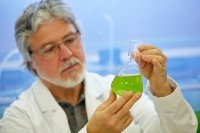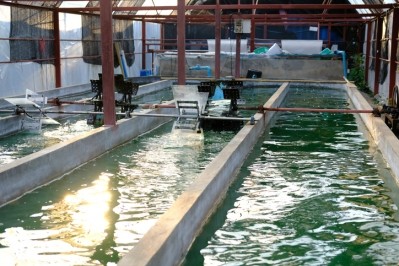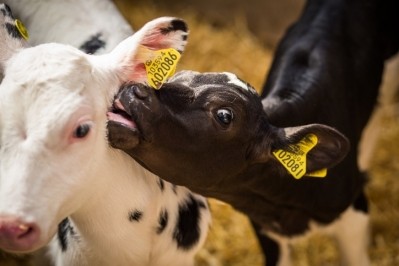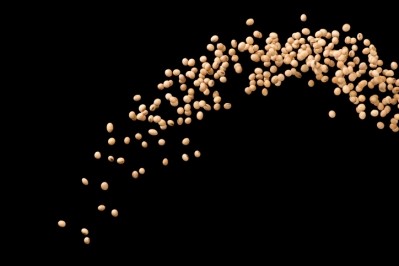Special Edition: Feed Protein Innovation
Protein alternatives: The case for microalgae as soybean meal substitute in dairy cow nutrition
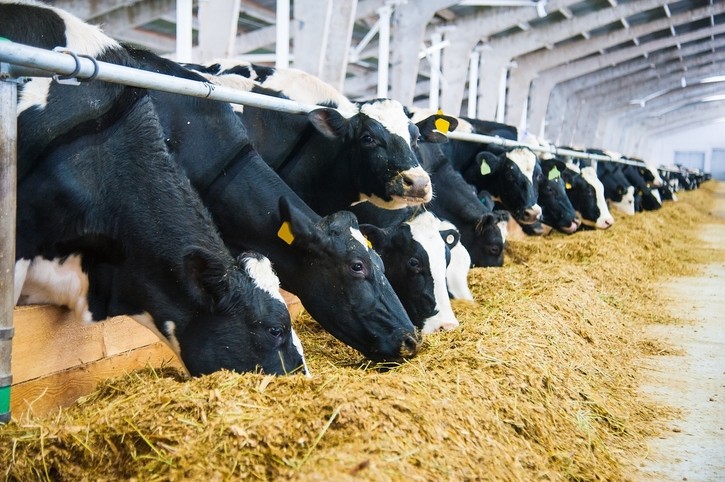
However, they said the palatability of the microalgae would need to be improved.
The objective of their study, which was conducted at the University of Helsinki research farm, was to compare the effects of different microalgae species, namely Spirulina platensis, Chlorella vulgaris, and a mixture of C. vulgaris and Nannochloropsis gaditana, against soybean meal on dairy cow performance, milk fatty acid composition and nitrogen utilization.
The research was published in Animal Feed Science and Technology.
The findings demonstrated the suitability of non-defatted and protein-rich microalgae for the nutrition of lactating dairy cows, said the Finnish team.
They explained that the use of microalgae in the diet did not affect total amount of dry matter intake (DMI) but changed the composition of DMI by increasing silage intake, and thus led to decreasing proportion of concentrate in the diet. Despite the poorer palatability of microalgae concentrates, microalgae diets resulted in milk and energy corrected milk (ECM) yields similar to soybean meal, with spirulina having numerically the highest yields, they said.
“This may be attributed to increased methionine intake on microalgae diets.”
The team found no differences in apparent digestibility of nutrients between the diets tested:
“Owing to spirulina, microalgae diets increased milk fat concentration either via more acetate intensive rumen fermentation or increased body lipid mobilization. Nannochloropsis inclusion in the diet resulted in most favorable omega-6: omega-3 ratio for human nutrition and fourfold increase in milk eicosapentaenoic acid (EPA) concentration without adverse effects on milk fat production.”
Background
One of the prompts for the research was the fact that the EU is highly dependent on protein feed imports, with self-sufficiency in soybean production very low, at only 5% (Bouxin, 2017), leaving the EU livestock sector vulnerable to trade distortions, availability and price volatility of soybeans.
The reduction of the protein deficit of the EU is considered to have multiple ecological and socio-economic advantages (Häusling, 2011), wrote the authors
“This requires both the improvement of current protein feed production systems such as increased utilization of pulses as well as the development of novel protein feed resources such as microalgae, that include both prokaryotic species such as cyanobacteria, and eukaryotic species such as chlorophytes belonging to green algae.”
The case for microalgae derived protein
Due to their extremely rapid growth rate (Chisti, 2007), microalgae out-yield conventional protein feed resources on an area basis (van Krimpen et al., 2013), noted the team.
“Because microalgae cultivation can take place in marginal or non-arable land, it has also been suggested that the feed use of microalgae has a potential to improve food security (Efroymson et al., 2017).”
They acknowledged the high production cost of microalgae (Pang et al., 2018) makes them currently an uncompetitive feed option, but they said that situation may change in the near future due to technical development and different policy interventions such as incentives and carbon taxation.
Rapeseed replacement
This is not the team’s first evaluation of microalgae as an oilseed replacement in animal diets.
In a previous study, again in dairy cows, the authors found that the substitution of rapeseed meal by microalgae affected the composition but not total amount of DMI as they said the poor palatability of microalgae was compensated by increased silage intake, with the proportion of concentrate in the diet decreased (Lamminen et al., 2017).
“Furthermore, feeding microalgae resulted in lower milk protein yield, efficiency of nitrogen utilization (NUE), and milk production response to increased crude protein intake, which suggested lower protein value of microalgae than that of rapeseed meal. However, microalgae may perform more favorably in comparison to soybean meal as rapeseed meal generally results in [a] greater milk production response than soybean meal on grass silage based diets (Huhtanen et al., 2011; Martineau et al., 2013).”
Microalgae species selection
The choice of microalgae species likely affects animal performance as the species differ greatly in chemical composition, including amino acid (AA) composition (Becker, 2013), but also in protein degradability (Costa et al., 2016) and cell wall construction, said the Finnish researchers. The effect of the latter has been demonstrated in biogas production, where Chlorella sp. (chlorophyta) and Nannochloropsis sp. (ochrophyta) have resulted in lower fermentability than other strains due to resistant cell wall (Bohutskyi et al., 2014), and cyanobacteria showed higher fermentability than C. vulgaris (Mendez et al., 2015), they said.
Crude fat and EPA content is known to be higher in Nannochloropsis sp. (Sukenik et al., 1993) than in Spirulina platensis (cyanobacterium) and C. vulgaris (Chacón-Lee and González-Mariño, 2010), which can have positive effect on milk EPA and PUFA concentration similarly to fish oil with high EPA content (Kairenius et al., 2015), added the team.
However, as high dietary fat and especially PUFA concentration can decrease DMI (Onetti and Grummer, 2004; Weld and Armentano, 2017) e.g. via negative effects on ruminal fermentation (Allen, 2000), and oxidation of EPA can result in 'fishy' odour compounds (Hammer and Schieberle, 2013), the effect of N. gaditana on DMI is likely more negative than that of S. platensis and C. vulgaris, noted the Finnish experts.
Methodology
The current study weighed up different microalgae species as protein supplements in the nutrition of lactating dairy cows in comparison to soybean meal.
Four multiparous lactating Finnish Ayrshire cows (112 days in milk) were used in a balanced 4 × 4 Latin square study.
The cows were then randomly assigned to four protein feed rations. The diets consisted of pelleted cereal-sugar beet pulp (A-Rehu Ltd., Seinäjoki, Finland) and (1) a pelleted soybean supplement containing 833 g/kg DM of soybean meal, (SOY) (A-Rehu Ltd.), (2) S. platensis (SPI) (Duplaco), (3) C. vulgaris (CHL) (Duplaco), or (4) mixture of C. vulgaris and N. gaditana (1:1 on DM basis; CHL-NAN) (Duplaco).
They said they added water to the algae (around 130 ml/kg of concentrates) before mixing it daily with other concentrate components to bind algae powder on pellets. No water was added to concentrates in SOY. In addition to other concentrate components, cows were offered a mineral-vitamin supplement (Pihatto-Melli Plus, Raisioagro Ltd., Raisio, Finland), said the team.
Feed intake and milk yield of the cows were recorded daily throughout, with sampling and analysis of feed, blood, milk, urine and feces also conducted.
Results
The substitution of soybean meal by microalgae did not affect the quantity of total DMI, but changed the composition of DMI by decreasing the concentrate: forage ratio of the diet owing to the poorer palatability of microalgae, found the researchers.
They said the intake of methionine was increased and that of histidine decreased with microalgae diets compared to SOY, but no significant changes in arterial concentrations were observed.
The digestibility of nutrients, milk or energy corrected milk (ECM) yield were not affected by dietary treatments. However, owing to SPI, algae diets resulted in numerically +2.2 kg/d higher ECM yield than SOY, added the authors.
Microalgae diets tended to result in higher milk fat, arterial acetic acid and non-esterified fatty acid concentrations than SOY, they said. Milk fat and arterial acetic acid concentrations were increased and milk fat yield tended to increase on SPI compared to CHL and CHL-NAN, said the researchers.
Urinary nitrogen excretion was also lower for microalgae diets than for SOY, they found.
In summary, they said compared to soy, microalgae did not affect the quantity but changed the composition of DMI due to poorer palatability. The use of S. platensis increased milk fat production, while milk EPA concentration was increased without signs of milk fat depression in cows fed the diet that included N. gaditana.
Source: Animal Feed Science and Technology
DOI: https://doi.org/10.1016/j.anifeedsci.2018.11.005
Title: Different microalgae species as a substitutive protein feed for soya bean meal in grass silage based dairy cow diets
Authors: M. Lamminen, A. Halmemies-Beauchet-Filleau, T. Kokkonen, S. Jaakkola, A. Vanhatalo
